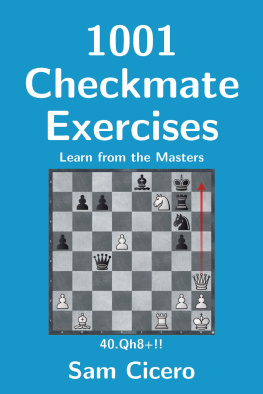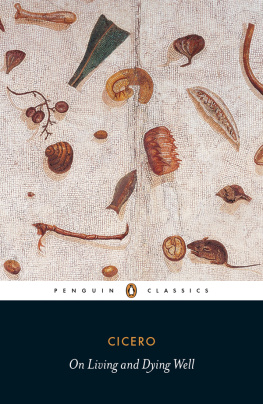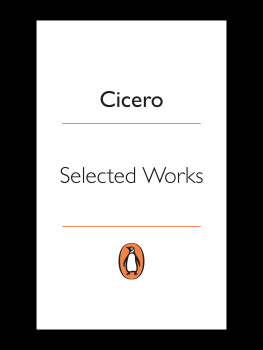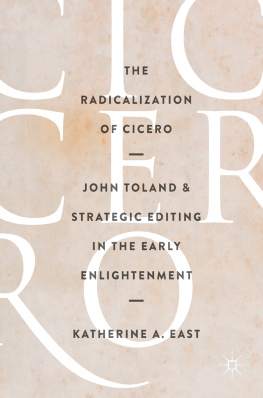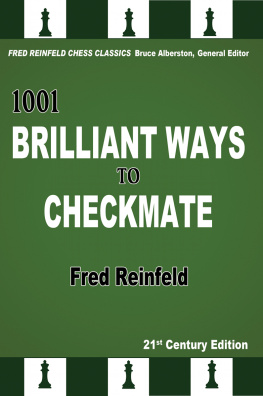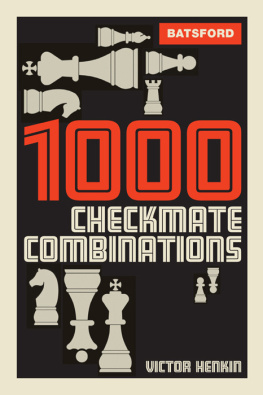Cicero - Learn from the Masters: 101 Checkmate
Here you can read online Cicero - Learn from the Masters: 101 Checkmate full text of the book (entire story) in english for free. Download pdf and epub, get meaning, cover and reviews about this ebook. year: 2020, publisher: Cicero Chess, genre: Children. Description of the work, (preface) as well as reviews are available. Best literature library LitArk.com created for fans of good reading and offers a wide selection of genres:
Romance novel
Science fiction
Adventure
Detective
Science
History
Home and family
Prose
Art
Politics
Computer
Non-fiction
Religion
Business
Children
Humor
Choose a favorite category and find really read worthwhile books. Enjoy immersion in the world of imagination, feel the emotions of the characters or learn something new for yourself, make an fascinating discovery.
Learn from the Masters: 101 Checkmate: summary, description and annotation
We offer to read an annotation, description, summary or preface (depends on what the author of the book "Learn from the Masters: 101 Checkmate" wrote himself). If you haven't found the necessary information about the book — write in the comments, we will try to find it.
Cicero: author's other books
Who wrote Learn from the Masters: 101 Checkmate? Find out the surname, the name of the author of the book and a list of all author's works by series.
Learn from the Masters: 101 Checkmate — read online for free the complete book (whole text) full work
Below is the text of the book, divided by pages. System saving the place of the last page read, allows you to conveniently read the book "Learn from the Masters: 101 Checkmate" online for free, without having to search again every time where you left off. Put a bookmark, and you can go to the page where you finished reading at any time.
Font size:
Interval:
Bookmark:
Learn from the Masters
Copyright: Sam Cicero, 2020.
Version 1: 2020.
Sam Cicero has asserted his right under the Copyright, Designsand Patents Act, 1988, to be identified as the author of thiswork.
All rights reserved. No part of this book may be reproduced in anyform, stored in any retrieval system, or transmitted in any form by anymeans, electronic, mechanical, photocopy, recording, or otherwise,without prior written permission of the author.
This book is only licensed for the purchasers use. It may not be givenaway or resold without the authors permission. If you wish to sharethe ebook with friends, please buy additional copies for their use. Thiswill support my work on the book.
Cover:
Thecover shows a position from the game Matlakov - Nabaty, Batumi2018. Matlakov now played 40.Qh8 + !!, which leads to mate in 2.Thank you for purchasing my chess book.
As with my other books, I have tried to write a book that you willenjoy reading, and that will improve your chess skills.
I welcome comments and feedback on the book. I will correct any errorsthat are found, and update the book as needed.
If you would like to help other potential buyers after you finishreading the book, please write an honest review of the book atAmazon.
Sam Cicero
www.cicerochess.com
This book presents 1001 checkmate exercises from recent tournamentgames, and it has the same structure as my book 1001 CheckmateExercises: Mastering An Essential Chess Skill . In contrast tothe previous book, this book uses exercises from recent mastergames. These exercises provide readers with different types ofcheckmate patterns to study. In contrast to non-master games, thegames in this book generally have roughly equal material for bothsides. The large collection of exercises is complemented by aformat that is also designed to improve the readers visualisationskills.
The book contains 1001 checkmate exercises from master games for thereader to solve. The game scores were obtained from Mega Database2020 from ChessBase.
The book contains mate in 1, 2, 3 and 4 exercises. The mate in 1, 2 and3 exercises are split into two chapters for each mate. In the first chapterfor the particular mate, the position is given just before the mate ispossible, and the reader is required to find the mate. In the secondchapter, the position is given before the losing move is made. The taskis to visualise this move, and then to find the mate. Many of theseexercises include bad blunders that thereby allow a checkmate. Asupplementary exercise in these cases is for the reader to find a bettermove that can potentially avoid the checkmate, although this is notalways possible. It is interesting to note that such blunders can occurin master-level games, particularly in games with faster timecontrols.
The format of the book means that the level of visualisation required tosolve the exercises increases by one half-move (or ply in computer chessterms) with each chapter. Hence, the exercises gradually extend the readers visualisation skills, as well as improving checkmatingskills.
There is only one first move that achieves the required goal for eachexercise. For the longer-mate exercises, there may be several moves forthe second and later moves that achieve the goal, and all of thesechoices are acceptable as solutions. The mate in 1 exercises areparticularly good for developing quick board vision, and the aim is tosolve these exercises quickly. Of course, the longer-mate exercisesrequire more work. Its worth noting that several of the mates in thebook were missed by the players, which confirms the need to practisesolving checkmate exercises.
I have deliberately not sorted the exercises into themes. This is toprovide an environment that is closer to a real game where such hintsare, of course, not available. Therefore, the exercises are sortedalphabetically based on Whites surname in each chapter.
Detailed solutions are provided for all the exercises, and theyhave been computer-checked by several strong chess engines foraccuracy. The main engines used were Komodo, Houdini andStockfish.
Each exercise starts on a new page. A diagram of the current positionis provided, together with the requirement of the exercise. This isfollowed by a page break, so that the solution is not visible. Thesolution is given on the next page, where the diagram is repeated forreference. This layout works on my Kindle Paperwhite, but I cantguarantee that it works on all devices.
Spotting tactics and checkmates is a basic skill that all goodplayers need. This skill can be improved by working through puzzle books, and there are many of these available. The books byHeisman [] are two good recent examples of suchbooks.
Purdy [] offers a simple thinking aid for spotting combinations,including checkmates. His concise rule is:
In any position, present or future, look around for all possible checks,all jump-checks, and particularly all jump-mates.
In Purdys system, jump-moves are moves that would be possible ifevery piece could jump over anything in its way and could not becaptured. Purdy gives examples of how to use this rule for improvingtactical vision.
Calculating variations accurately is an essential skill, and this iscovered in various books. Kotovs book [] offer more recentadvice.
The game scores use standard algebraic notation. The followingsymbols are also used.
x | capture |
+ | check |
# | checkmate |
! | good move |
!! | brilliant move |
? | bad move |
?? | blunder |
White wins the game | |
Black wins the game |
The side to move on a diagram is denoted by a white or black circle onthe side of the diagram.
Mate in 1: Exercises 1 - 200
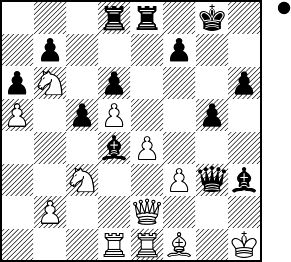

1Qg1 #
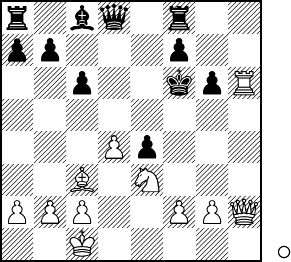

1.Qe5 #
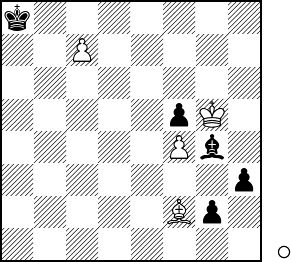

1.c8Q #
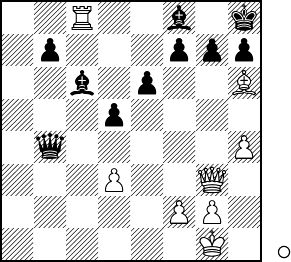
Font size:
Interval:
Bookmark:
Similar books «Learn from the Masters: 101 Checkmate»
Look at similar books to Learn from the Masters: 101 Checkmate. We have selected literature similar in name and meaning in the hope of providing readers with more options to find new, interesting, not yet read works.
Discussion, reviews of the book Learn from the Masters: 101 Checkmate and just readers' own opinions. Leave your comments, write what you think about the work, its meaning or the main characters. Specify what exactly you liked and what you didn't like, and why you think so.

